P-51B Mustang
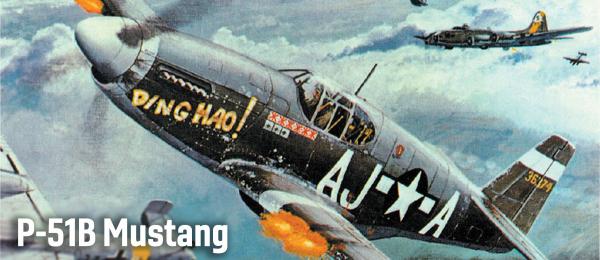
DOWNLOADABLE BONUS CONTENT
DISCOVER MORE CONTENT!
Find more photos by visiting www.ModelAviation.com/bonuscontent.
Editor’s note: Dennis Norman, author of Model Aviation’s "Free Flight Scale" column since 2002, passed away in November 2021. In honor of his many contributions to this magazine and Free Flight modeling, we have included his final column. Fly high, Dennis!
THOUGHT BY MANY TO have been the best overall fighter aircraft produced in quantity during World War II, the P-51 Mustang was more like an international thoroughbred than a wild American range horse. The design combined American ingenuity, Teutonic efficiency, and a magnificent British Merlin engine. A detailed discussion about this superb aircraft is far beyond this effort, but I’ve included a list of references.
The British Purchasing Commission originally sought to have the Curtiss P-40 fighter built under license for the Royal Air Force. North American Aviation questioned building an old design from another company, and instead proposed the design and production of a more modern fighter. In April 1940, the P-51 was designed by a North American team that was headed by James Kindelberger. The prototype airframe was rolled out on September 9, 1940, just 102 days after the contract for it was signed. The first P-51 flew on October 26, 1940.
The P-51 was originally designed to use an Allison engine, which had limited high-altitude performance. The British, using Allison engines, flew early P-51s as the Mustang Mk.I, hoping to improve its performance at higher altitudes. The definitive P-51D was powered by a Packard license-built version of the Merlin 66 engine and was armed with six .50 caliber Browning machine guns. By late 1943, the P-51B (which was supplemented in mid-1944 by the P-51D) was used by the Eighth Air Force to escort bomber raids over Germany.
Mustangs were flown worldwide. They appeared not only in the garb of Allied nations but also in that of neutral countries, such as Sweden and Switzerland, who happily pressed "impounded" Mustangs into their air forces. The Germans also tested a number of captured Mustangs and had great respect for them. In doing so, they plastered "their" Mustangs with black crosses and swastikas!
Indeed, there have been so many colorful schemes for Mustangs that a modeler’s only dilemma might be in deciding which scheme to choose. The P-51B Ding Hao! was chosen for this column.
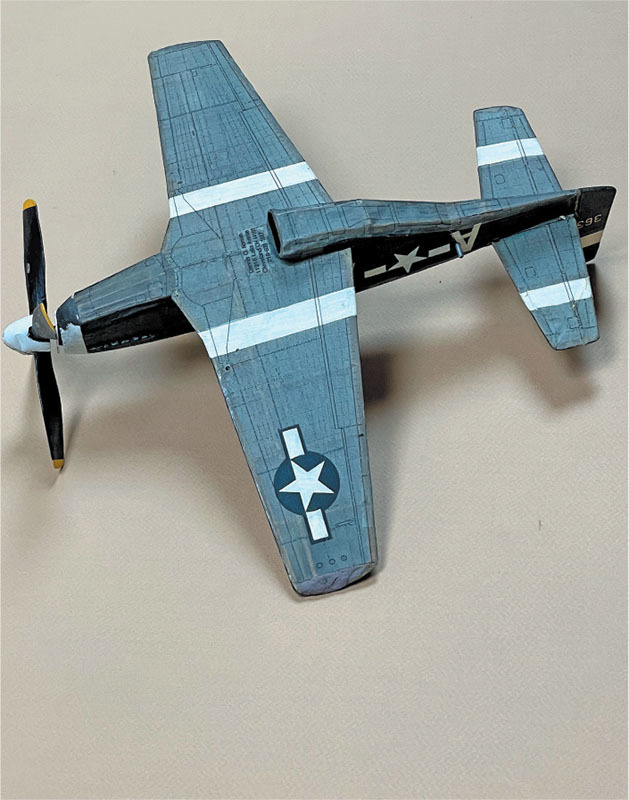
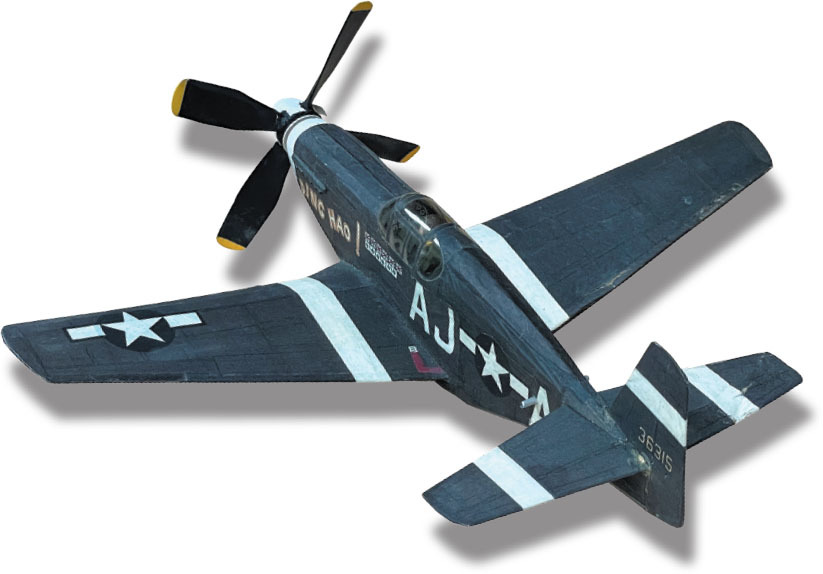

FREE • FLIGHT • FUN
join the FlyingAcesClub.com
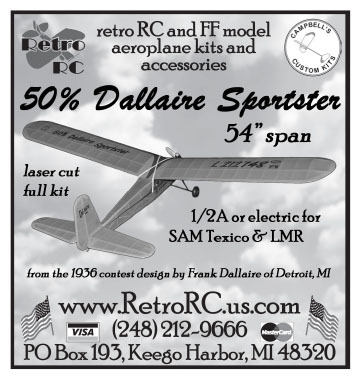
retro RC and FF model aeroplane kits and accessories
50% Dallaire Sportster
54" span
laser cut full kit
1/2A or electric for SAM Texico & LMR
form the 1936 contest design by Frank Dallaire of Detroit, MI
(248)212-9666
PO Box 193, Keego Harbor, MI 48320
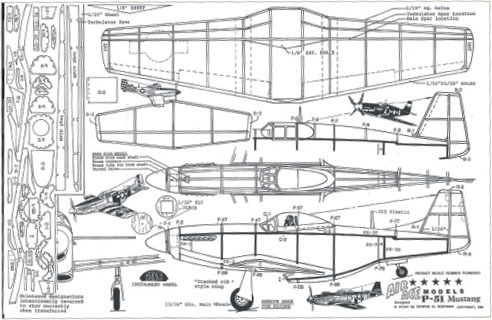
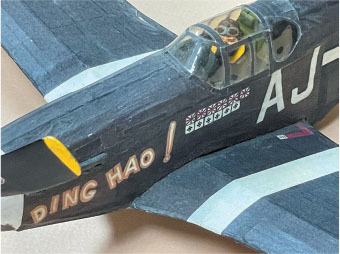
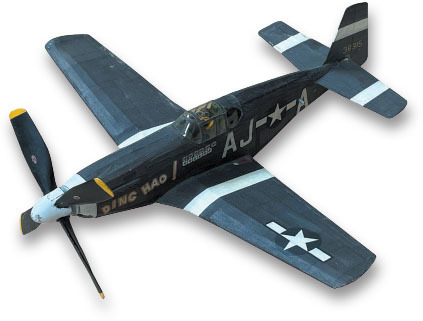
P-51B Ding Hao! was flown by Col. James H. Howard (a former Flying Tiger ace in China), who single-handedly attacked more than 30 German fighters in the European Theater of Operations (ETO). Col. Howard shot down three enemy fighters and damaged three more as he defended an American bomber formation on January 11, 1944. He was so highly praised by the bomber crews that he received the Congressional Medal of Honor—the only award of this type presented to a US fighter pilot in the ETO.
As a modeling subject for rubber-powered Free Flight (FF) Scale, the Mustang is outstanding. Its streamlined nose with a spinner contours smoothly into a fuselage with good nose and tail moments. The fuselage is sufficiently long and wide enough to accommodate a rubber motor two or three times the length of the distance between the propeller shaft and the motor peg. The wing and tail areas are generous, but an enlargement of the stabilizer by 118% to 120% is recommended for a FF model.
To overcome any concerns about the Mustang’s low-wing configuration, increase the dihedral and build in stabilizing washout for each wingtip by placing small shims to elevate the left rear wingtip approximately 1/16 inch and the right rear wingtip approximately 3/32 inch to 1/8 inch. Doing this should help to delay tip stalls, which could cause the model to become unstable.
As noted, there were a number of handsomely marked P-51Bs, but Ding Hao! seemed to be the most appropriate because Col. Howard was uniquely recognized for his efforts on January 11, 1944.
Originally presented as a 13-inch wingspan Air Ace kit in Peanut Scale with colored tissue coverings at that size, your model could be built larger if you prefer. Unfortunately, the tissue covering for the Peanut Scale version is no longer available, but detailed, full-color patterns are included as bonus content on the Model Aviation website, listed in "Sources."
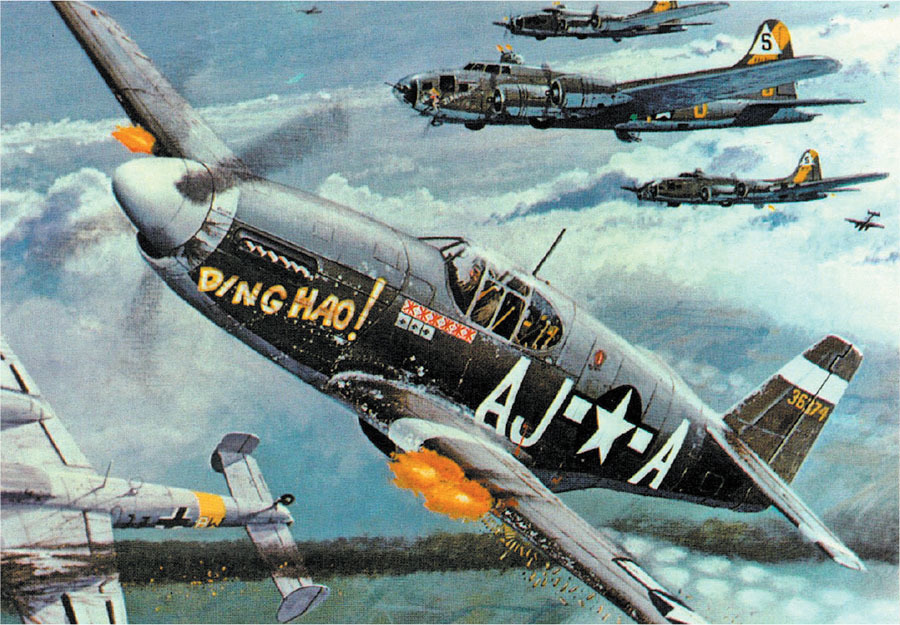
SOURCES:
National Free Flight Society (NFFS)
Model Aviation online
DRAWING REFERENCES:
1. North American P-51D Mustang by Bjorn Karlstrom; aircraft described: Number 122, AeroModeller Plans Service
2. P-51 Mustang in Action—Aircraft No. 45 by Larry Davis (1981)
HISTORY, MARKINGS, ETC.:
1. Aces of the Eight by Gene B. Stafford and Williams N. Hess (1973)
2. Aces of the Southwest Pacific by Gene B. Stafford (1977)
3. Aerodata International: Fighters of World War II, Volume I: North American P-51D Mustang by Harry Holmes (1980)
4. Aircam Aviation Series, No. 5: North American P-51B/C Mustang in USAAF Service by Richard Ward and Ernest R. McDowell (1968)
5. Arco-Aircam Aviation Series, No. 1: North American P-51D Mustang in USAAFUSAF Service by Richard Ward (1968)
6. Camouflage and Markings No. 16: North American P-51 and S-6 Mustang; U.S.A.A.F., E.T.O. and M.T.O., 1945-1945 by Roger Freeman (1971)
7. Fighting Mustang: The Chronicle of the P-51 by William N. Hess (1970)
8. FineScale Modeler, Vol. 4, No. 4, August 1986 (excellent color photos of a 1/4-inch [1:48] plastic model of a P-51D in the marking of Dusty Butt)
9. More World War II Aircraft in Combat: 47 Famous Warplanes Depicted in Raging Conflict by Glenn B. Bacousett (1981); "North American P-51B Mustang" (fullcolor painting depicting Ding Hao!)
10. Mustang at War by Roger A. Freeman (1974)
11. P51 Mustang by Robert Grinsell and Rikyu Watanabe (1980)
12. Scale Models, March 1972: "Mustang"
PLASTIC KITS FOR 3D DETAILS:
1. P-51B Mustang a. Mustang P-51B by Monogram Models, Inc. (1967). Excellent 1:48-scale (1/4 foot = 1 foot) kit of the P-51B in the markings of Ding Hao!
b. Mustang, North American P-51B by Revell, Inc. 1:32 scale (3/8 inch = 1 foot) with extensive detail. The wingspan is 14 inches. Both the spinner and the canopy from it might be useful for molding these items for a slightly smaller Peanut Scale version.
2. P-51D Mustang
a. F-51D Mustang by Monogram Models, Inc. (1966); 1:32-scale (3/8 inch = 1 foot) model that, like the 1:32-scale P-51B, can promise useful references for the canopy, spinner, etc.
b. Mustang P-51B by MPC Model Products; 1:24-scale (1/2 inch = 1 foot) kit for detailed information about the cockpit interior, landing gear, etc.
By







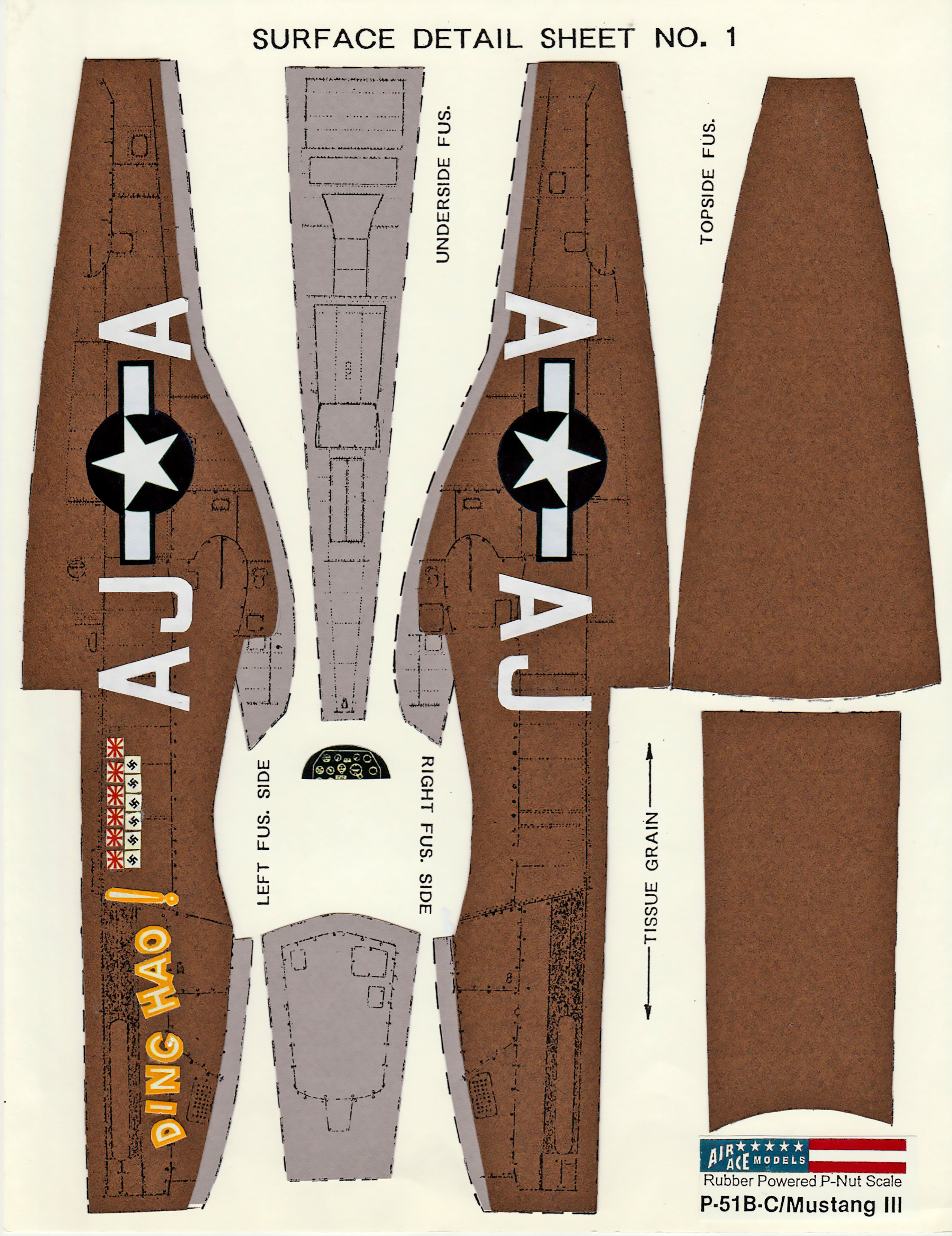




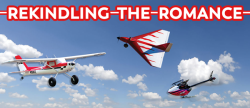
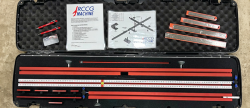
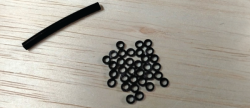
Add new comment